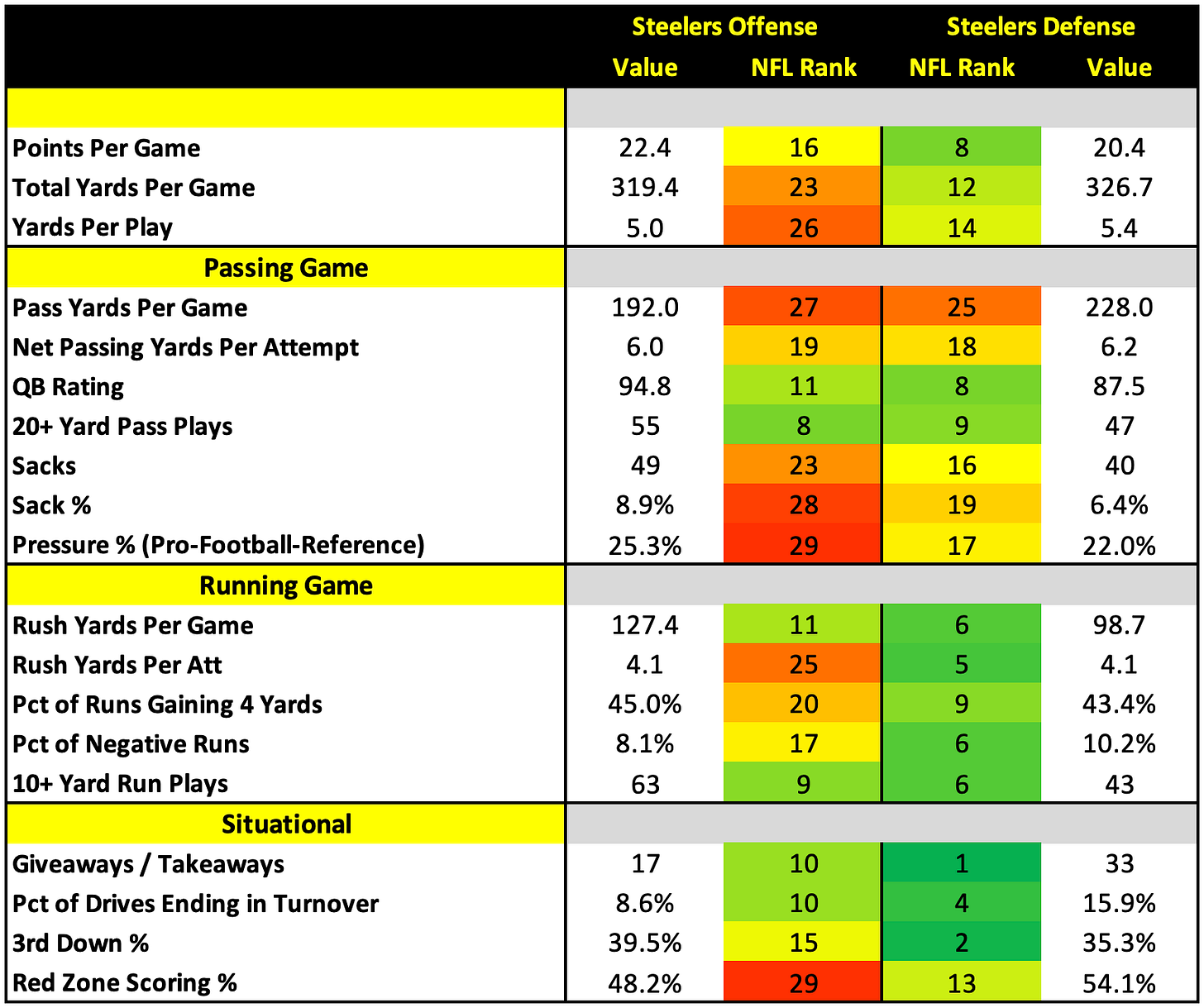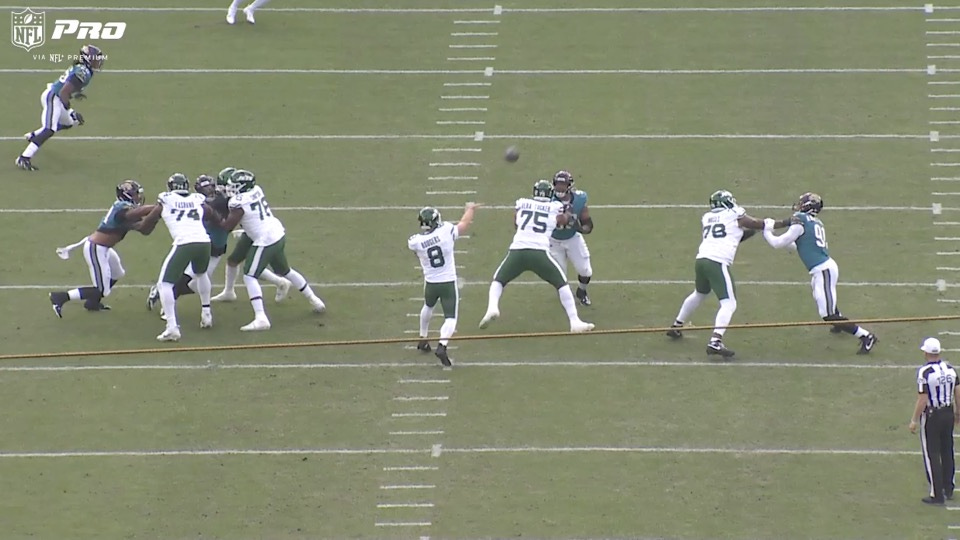Coaching Staff
Head Coach: Mike Tomlin
Offensive Coordinator: Arthur Smith
Defensive Coordinator: Teryl Austin
Special Teams Coordinator: Danny Smith
2024 Summary (W-L Record: 10-7)
Last year was supposed to be the first time in Mike Tomlin’s tenure that the Steelers were going to have a losing record. Then they started the season 10-3. While Pittsburgh exceeded the low expectations set for their team, they finished the regular season with 4 straight losses and were summarily bounced in the playoffs by the Ravens.
The offense’s season can roughly be cut into thirds. With Russell Wilson battling a calf injury suffered in training camp, the first 6 games were started by Justin Fields. Pittsburgh went 4-2 during that span. However, they averaged just 20.7 points per game and the passing game ranked 28th.
Mike Tomlin decided they needed more from the quarterback position and gave the starting job back to Wilson once he was healthy. The move paid off at first as the Steelers won 6 of their next 7 and scored more than 28 points per game. The passing attack improved with Wilson slinging moon balls to his receivers for big plays downfield.
It wasn’t necessarily a versatile or consistent passing game, however. It became very hit-or-miss and ultimately collapsed over the final 5 games of the year. The Steelers lost all 5 of those games (including their Wild Card Playoff matchup vs. the Ravens), averaged just 14.2 points per game, and the passing attack shrunk down to the levels they experienced with Fields at the start of the season.
Take advantage of our 25% discount if you subscribe before the end of Week 1
The defense, despite being the best unit on the team, wasn’t necessarily without blame. They allowed 27.4 points per game during that 0-5 stretch, and the run defense that had been stout all season allowed the Ravens to rush for over 200 yards against them twice in that span.
2024 turned into a season that Steelers fans had seen many times before. They exceeded mild expectations but weren’t close to being a serious contender.
Then they went one-and-done for the 5th consecutive time in the playoffs.
Key Additions
QB Aaron Rodgers
RB Kaleb Johnson (3rd Rd, 83rd Overall)
RB Kenneth Gainwell
WR D.K. Metcalf
TE Jonnu Smith
DL Derrick Harmon (1st Rd, 21st Overall)
DL Daniel Ekuale
DL Yahya Black (5th Rd, 164th Overall)
EDGE Jack Sawyer (4th Rd, 123rd Overall)
LB Malik Harrison
CB Darius Slay
CB Jalen Ramsey
CB Brandin Echols
S Juan Thornhill
S Chuck Clark
Key Losses
QB Russell Wilson
QB Justin Fields
RB Najee Harris
WR George Pickens
WR Van Jefferson
TE MyCole Pruitt
LT Dan Moore Jr.
DL Larry Ogunjobi
LB Elandon Roberts
CB Donte Jackson
CB Cameron Sutton
S Minkah Fitzpatrick
S Damontae Kazee
Did They Address Their Holes?
The Steelers had an offseason unlike what we’ve seen from them traditionally. They were very active in free agency and made several big trades.
First and foremost, they turned over their offensive skill positions. Not because they were necessarily bad, but because they needed something different.
Pittsburgh traded a 2nd-round pick and change for wide receiver D.K. Metcalf. After the draft, they traded away receiver George Pickens.
At running back, they let Najee Harris leave in free agency. It seems like they’ll have 4th-year back Jaylen Warren, rookie Kaleb Johnson, and free agent signing Kenneth Gainwell sharing the responsibilities in the run game.
They acquired Jonnu Smith via trade, meaning they’ll have 3 viable tight ends in Smith, Pat Freiermuth, and Darnell Washington.
Oh, they also got rid of Justin Fields and Russell Wilson and signed Aaron Rodgers.
Below, you can check out my breakdown of Rodgers’ 2024 season with the Jets. It includes some interesting quotes from Greg Cosell on his performance as well:
What Does Aaron Rodgers Have Left?
Aaron Rodgers is going to the Steelers, which officially makes the AFC North the most interesting division in football.
The Steelers offense has plenty of talent and should have a variety of ways to attack defenses this season.
On the other side of the ball, Pittsburgh had two areas that, when push came to shove, just weren’t good enough down the stretch.



